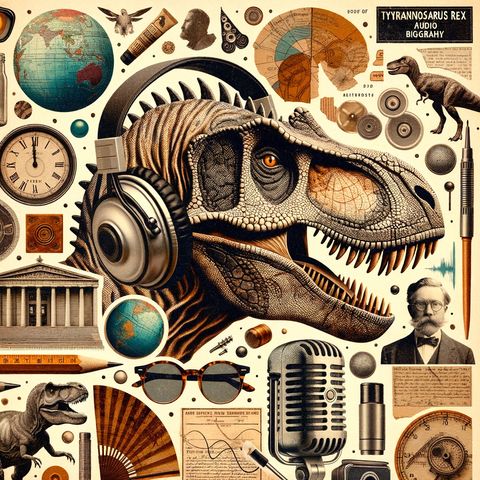20 OCT. 2024 · In the twilight of the Cretaceous period, some 68 to 66 million years ago, a fearsome predator roamed the lush forests and plains of western North America. With a massive skull bristling with serrated teeth, powerful hind limbs, and an insatiable appetite, Tyrannosaurus rex reigned as the apex predator of its time.
Standing up to 40 feet long and 12 feet tall at the hip, T. rex cut an imposing figure. Its enormous skull, measuring up to five feet in length, housed a brain larger than that of most dinosaurs, hinting at relatively high intelligence. But it was the rex's bite that truly set it apart - with a force of up to 12,800 pounds, it could crush bone and tear through flesh with ease.
Despite its fearsome reputation, T. rex's life was not without challenges. Fossil evidence suggests these titans suffered from parasites, injuries, and even bone infections. Their tiny arms, often the subject of jokes, may have served purposes we don't yet fully understand - perhaps for grasping prey up close or for leverage during mating.
T. rex's reign coincided with a time of great diversity in the dinosaur world. It shared its territory with horned dinosaurs like Triceratops, dome-headed Pachycephalosaurus, and armored Ankylosaurus. These potential prey items evolved their own defenses, leading to an evolutionary arms race that shaped both predator and prey.
As a warm-blooded creature, T. rex likely had a high metabolism, requiring it to eat frequently. It was an opportunistic predator and scavenger, using its keen senses to locate food. Its eyes faced forward, providing binocular vision ideal for judging distances when pursuing prey. Some scientists believe T. rex may have hunted in packs, though this remains a subject of debate.
The life cycle of T. rex was a long journey from hatchling to apex predator. Emerging from eggs roughly the size of footballs, young rexes were likely covered in downy feathers - a far cry from the scaly titans they would become. They grew rapidly, gaining up to 1,700 pounds per year during their teenage growth spurt. This fast growth allowed them to quickly fill the niche of top predator, but it also meant a relatively short lifespan of 20 to 30 years.
T. rex's reproductive habits remain somewhat mysterious, but we know they laid eggs and likely exhibited some form of parental care. Some fossils suggest that females may have been larger than males, though this is not conclusively proven. The discovery of medullary bone - a type of tissue found in modern birds during egg-laying - in some T. rex fossils indicates that we have identified some definite females.
As the end of the Cretaceous period approached, T. rex, along with its prey and contemporaries, faced an unprecedented challenge. The impact of a massive asteroid in what is now the Yucatan Peninsula triggered a cascade of environmental changes that would spell doom for non-avian dinosaurs. In a twist of evolutionary fate, while T. rex and its kind vanished, some of its smaller, feathered relatives would survive to evolve into the birds we know today.
The story of T. rex didn't end with its extinction. In 1902, Barnum Brown discovered the first T. rex skeleton in Montana, igniting the public's imagination. Since then, T. rex has become a cultural icon, starring in movies, inspiring countless toys, and drawing millions to museum exhibits. It continues to captivate scientists, with new discoveries constantly refining our understanding of this magnificent creature.
Today, T. rex remains a subject of intense scientific study and debate. Questions about its appearance, behavior, and physiology continue to drive research. Was it primarily a scavenger or an active hunter? How fast could it run? Did adult T. rexes have feathers? These questions and more ensure that even millions of years after its extinction, Tyrannosaurus rex continues to rule our imaginations, a true king of the dinosaurs.
This is a Quiet Please production for more go to http://www.quietperiodplease.com


